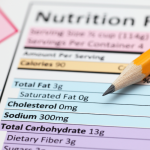The Environmental Working Group (EWG) recently released its annual ‘Dirty Dozen’ report, revealing that kale ranks third in pesticide contamination, following strawberries and spinach. Despite its growing popularity, kale has not been regularly tested by the USDA for almost a decade, raising concerns about its safety. In a study analyzing USDA data, over 92% of kale samples were found to contain residues of at least five different pesticides, with some samples containing up to 18 pesticide residues, even after washing. One pesticide found in kale, DCPA marketed as Datchal, is classified as a possible human carcinogen. In addition, the study found that 30% of kale samples contained two insecticides classified by the EPA as possible human carcinogens. The EWG recommends choosing organic produce whenever possible, especially for items on the ‘Dirty Dozen’ list. However, if organic options are not available, it is still important to consume fruits and vegetables for their health benefits, despite the potential risks of pesticide exposure. It is crucial to be mindful of the potential health risks associated with pesticide exposure, both for consumers and farmers who may have higher levels of exposure. While organic produce is ideal, consuming conventional produce is better than avoiding fruits and vegetables altogether. The Alliance for Food and Farming (AFF) disputes the EWG’s findings, arguing that non-organic produce is safe and that promoting organic options does not require labeling other produce as ‘dirty’. The ‘Clean 15’ list highlights the cleanest produce options available, providing consumers with choices for eating healthily. Ultimately, the key is to make informed choices based on individual preferences and budgets when it comes to purchasing fruits and vegetables.






